SEO Keyword Research for Food Bloggers
This SEO Keyword Research for Food Bloggers post includes affiliate links. When I find a great product or service, I like to share it with my readers. Sometimes I use affiliate links so I can earn commission for my recommendations. Thank you for your support!
How to Write SEO-Rich Blog Posts that Will Rank on Google
If you’re in the food blogging world, I’m sure you hear the acronym SEO a lot. SEO, the short-hand form for Search Engine Optimization, is the process by which blogs are enhanced to better communicate the purpose and content of the blog to various search engines. SEO keyword research is the backdrop of good SEO. Keyword research helps identify popular keywords and phrases that food bloggers can then use when developing content for their food blog.
Okay — that’s a mouthful, I know. Let’s back up for a minute. If you’re new to food blogging or you’ve tried SEO without success, it might be helpful to start at the beginning.
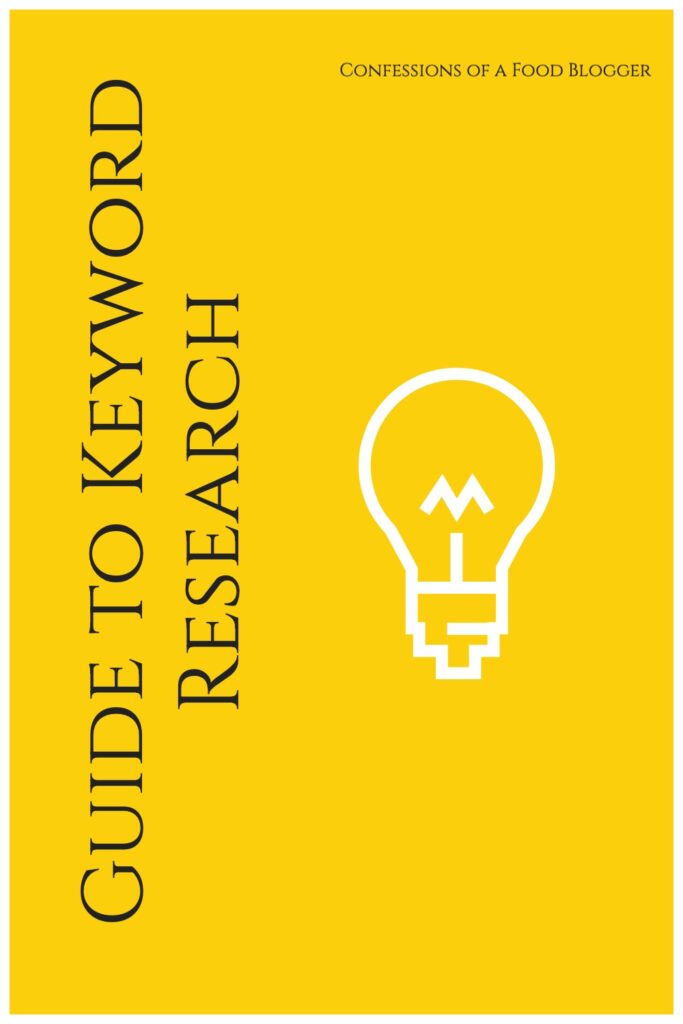
What is a Search Engine?
Search engines are essentially indexes of information found on the Internet. You might better know them by their trade names though — Google, Yahoo!, Bing and Pinterest are all search engines.
How Does a Search Engine Work?
Search engines “crawl” the Internet and categorize the information they find in accordance with proprietary algorithms that they develop. The goal is to categorize information so effectively that when a user types a search term into a search engine’s search bar, the search engine is able to deliver back content most likely to satisfy the user.
Over the years, search engines have gotten very effective at doing this by measuring a variety of factors. While the algorithms created by each search engine vary, certain factors, like the presence of keywords, are universal.
What Are Keywords?
A keyword is defined as “an informative word used to indicate the content of a document.” In SEO content writing, the use of keywords is a natural part of the writing process.
For example, if I am writing a blog post about my Thai Red Curry Ramen Noodle Bowl, I would likely use the words Thai, red curry, ramen noodle, bowl and recipe with high frequency throughout my post. A search engine, in turn, would recognize the frequency and consistency of those terms as an indication that my blog post was a recipe for a Thai red curry ramen noodle bowl and might deliver my post to a user typing those phrases into its search bar.
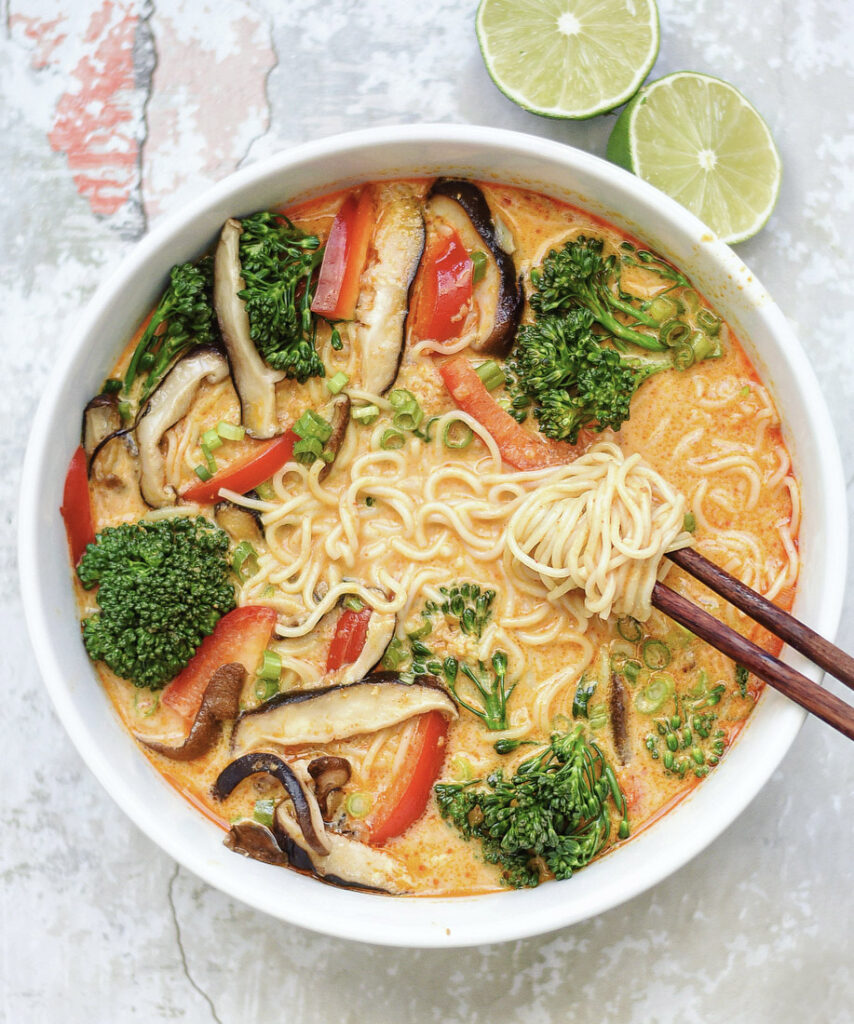
SEO Keyword Research for Food Bloggers: The Next Level
Notice that I italicized the word might in the section above. Just because I use certain keywords in a blog post, doesn’t mean that my post will be a high ranking return in a search engine’s results. Much of the success of my blog post will depend on how I link those keywords together to form long-tail keywords, how often I use those keywords and where I place those keywords.

Let’s spend a minute on long-tail keywords. Long-tail keywords are a string of related words. Usually 3-4 words in length. Long-tail keywords are longer and more specific than a single keyword or simple key phrase.
Generally speaking, because of their specificity, long-tail keywords get less search traffic and, while this may sound unappealing, there’s a big upside. The traffic that long-tail keywords get tends be higher quality traffic. This means that the traffic driven by long-tail keywords is likely to include users that are interested in exactly what you have to offer.
SEO Keyword Research for Food Bloggers: How To Do It
SEO keyword research helps me to identify popular keywords and phrases that I can use when developing content for my food blog. In fact, I do my SEO keyword research before I start writing any blog post. Sometimes I’ll go into my SEO keyword research expecting my blog post to have a certain main topic, but the research will direct me to change that. It’s a bit time-consuming, but over time I’ve developed it into a methodical process (check out my How to Write a Blog Post article to see this in action) with three basic steps:
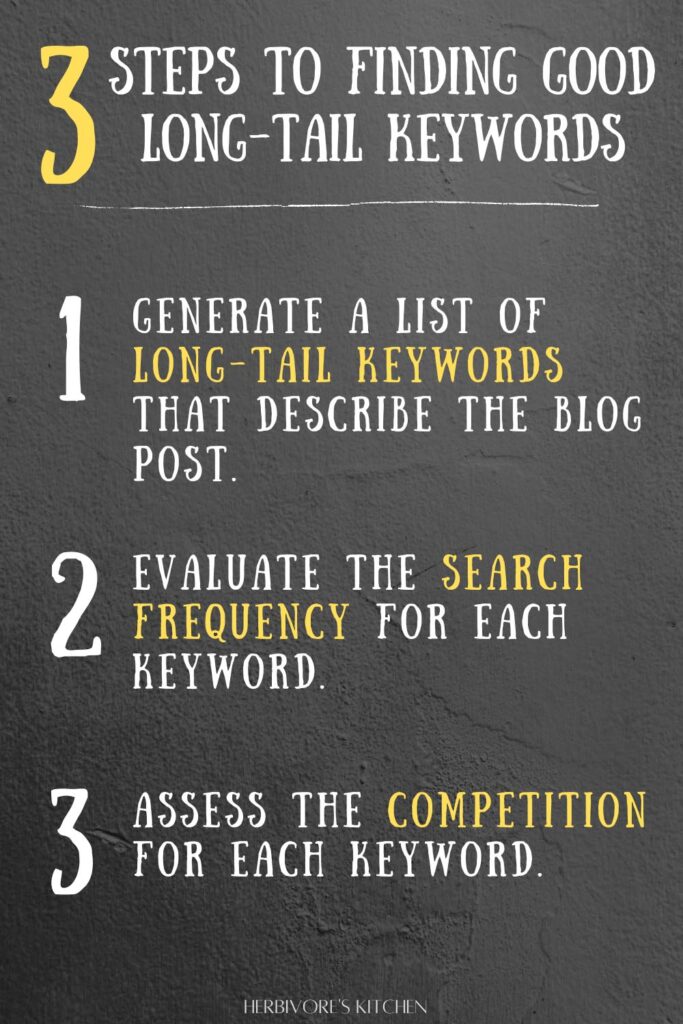
SEO Keyword Research by Search Engine
As I mentioned above, each search engine has its own proprietary method for indexing information it finds on the Internet. Google, for example, indexes content differently than Pinterest. In part, this is because Google users use Google differently than Pinterest users use Pinterest.
This is important to remember when conducting SEO keyword research. While research for one platform can certainly inform research on another, the effectiveness of such research will ultimately better align with the search engine for which the research is being done. For the purposes of this blog post, I will be conducting SEO keyword research for Google searches.
For example, I use some of my Google SEO keyword research to inform my use of keywords on Pinterest, but I do SEO keyword research on both platforms independently when creating the content for a blog post. Check out my How to Use Pinterest Keywords to Market Your Food Blog post for more information on SEO keyword research on Pinterest.

SEO Keyword Research Step 1: Generate a List of Long-Tail Keywords
While this step may seem simple, there’s some work to be done here. My goal is to find the best long-tail keyword to use as my primary keyword for my blog post as well as other long-tail keywords to use throughout my post. A primary keyword should reflect the main topic of my blog post — it’s the word or set or words that I want people to find me for. Let’s use my Thai Red Curry Ramen Noodle Bowl as an example.
This recipe includes ramen rice noodle, Thai red curry paste and several fresh vegetables. It’s pretty easy to make and it’s fairly healthy. It’s also vegan. With that in mind, I want to make a list of potential keywords that might describe this recipe in my blog post. Keywords might then include: recipe, ramen, soup, vegan, noodles, bowl, broth, easy, healthy, dinner, curry, food and Thai
These keywords, of course, are all single word keywords. And as I mentioned above, I’m more likely to get good quality traffic if I use long-tail keywords. So, my next step would be to work my keyword list into phrases that I think a user might put together when searching for a recipe that looks and sounds like mine. I might decide to include these long-tail keywords on my list:
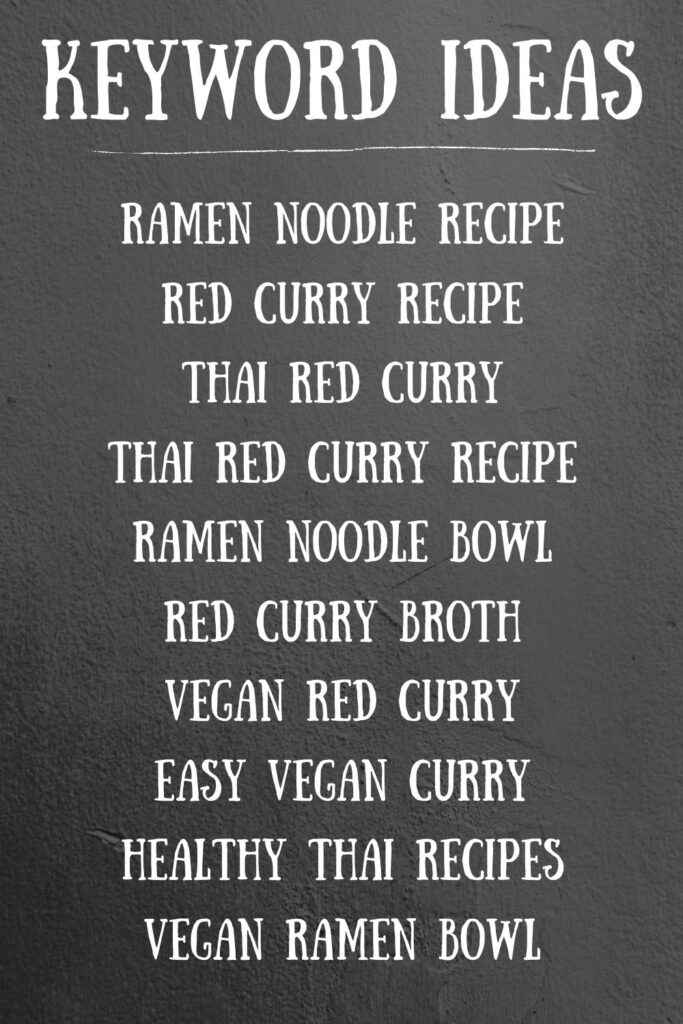

SEO Keyword Research Step 2: Evaluate the Search Engine Frequency for Each Keyword
Now that I have a list of potential long-tail keywords, I’ll want to confirm which of these long-tail keywords are popular among Google users (remember, I am conducting keyword research specifically for Google). Fortunately, Google makes this pretty easy to do through the Google Ads Keyword Planner.

In this article, I focus on Google’s Keyword Planner to search for high volume, low competition keywords. But there are others! For detailed instruction on how to conduct SEO research, check out my Food Blogger’s Guide to SEO mini course.
Google Adwords Keyword Planner
The Google Ads Keyword Planner is found in the Google Ads suite. Google Ads is Google’s advertising platform. Sellers and content creators use Google Ads to bid on displaying their ads, service offerings, products and videos to web users. The Google Ads Planner Tool helps content creators and sellers to develop their ads for their target audience by assisting them in… you guessed it… SEO keyword research.
The Google Ads Keyword Planner is free, but to use it you do need to have a Google account. To set up an account, go to Google’s Create Your Google Account Page. Once you have a Google Account, you can log into Google Ads. Google Ads will present you with a home dashboard. In the upper righthand corner of the dashboard, you’ll see a wrench icon with the words Tools & Settings below it. Click on that.
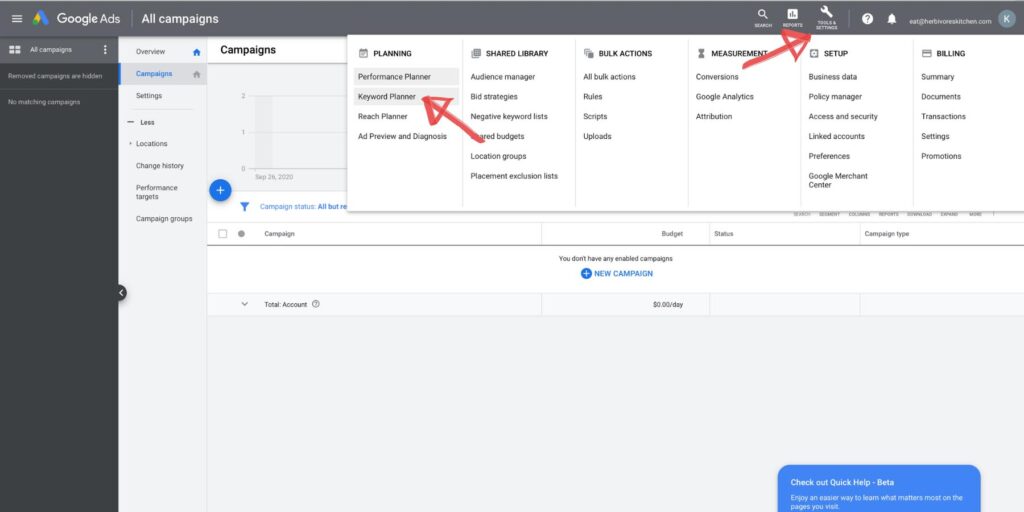
This will prompt a dropdown menu. In the left-most column on the dropdown menu, you’ll see the Keyword Planner. Click on that. In the window that follows, click on the box that says Discover New Keywords. This will open a window with two primary options: Start with Keywords and Start with a Website. Highlight the Start with Keywords option.
How to Search for Long-Tail Keywords in the Keyword Planner
In the first field, Google will prompt you to “enter products or services closely related to your business.” This is where you want to enter the list of long-tail keywords that you generated in Step 1. Google Ads will only let you research 10 keywords at a time, so you may need to do your research in batches. Then click on Get Results.

When the results populate, you’ll see a table including your keywords in the first column. To the right of each keyword, there will be a number under the heading Average Monthly Searches. This number will tell you how popular your long-tail keyword is with web users.
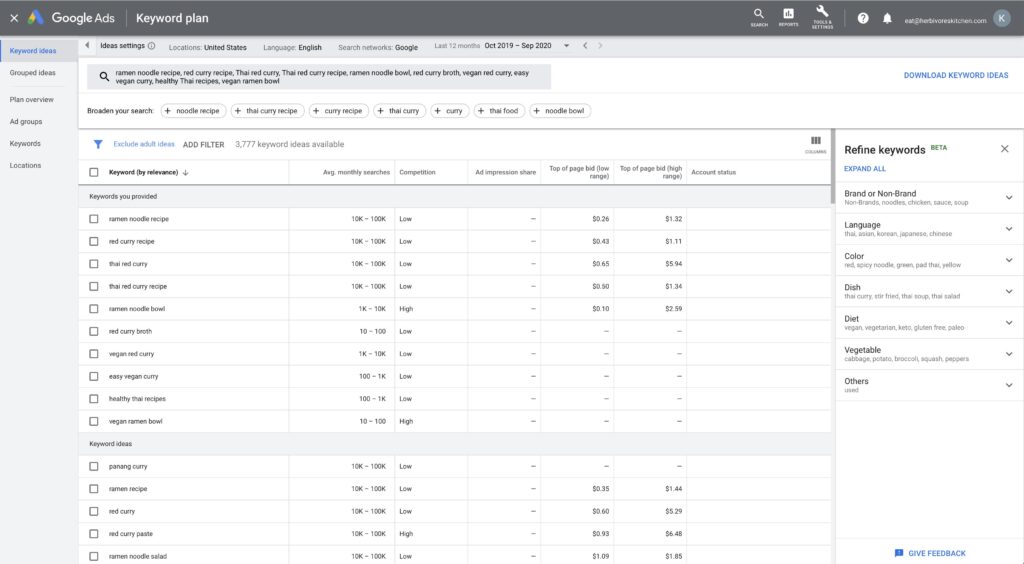
As you can see below, ramen noodle recipe, red curry recipe, Thai red curry and Thai red curry recipe are the most often searched long-tail keywords. I will want to keep these on my list. Ramen noodle bowl and vegan red curry also show strong results, so I’ll want to keep those as well. Vegan ramen bowl, healthy Thai recipes, red curry broth and easy vegan curryrank at the bottom of the list, so I will strike those from my list of long-tail keyword possibilities.
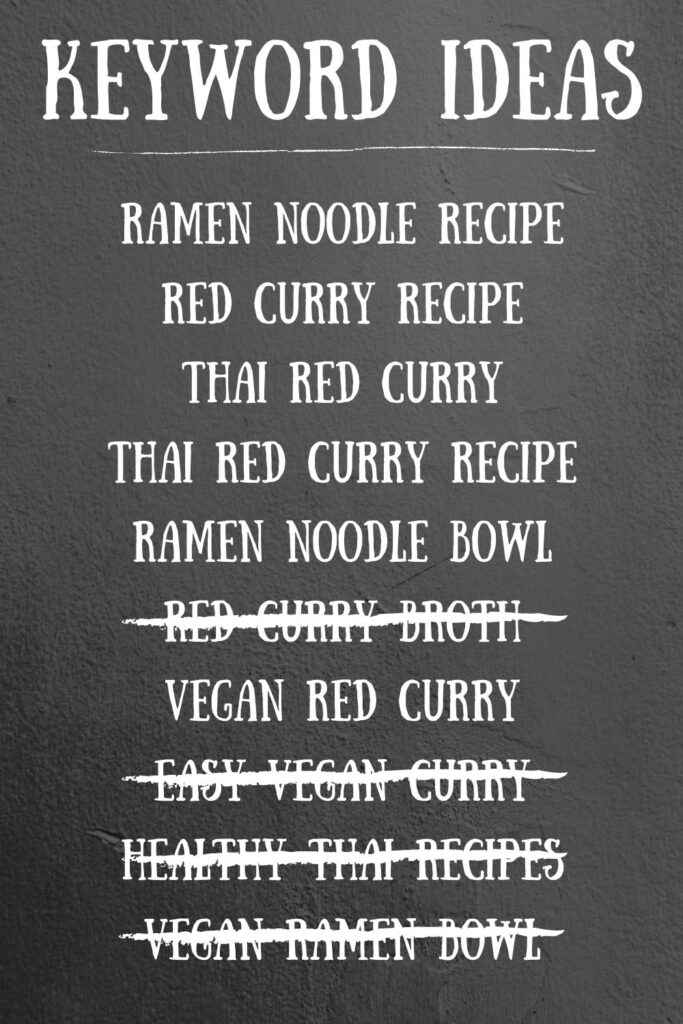

SEO Keyword Research Step 3: Assess the Competition for Each Keyword
I now have a paired-down list of potential long-tail keywords. I know that web users search these keywords often, so I know that these have a lot of potential for driving traffic to my blog. That’s not the end of the story though.
The next step in my research is to assess which of my possible long-tail keywords not only have a large audience, but also low competition. Remember, Google Ads is a tool for advertisers to create ads. As part of the process, advertisers want to know how much competition there will be for certain keyword phrases. This is the information provided in the third column. Here you will see the designations: low, medium and high.

As you can see, all of my remaining long-tail keywords have low competition with the exception of ramen noodle bowl. This keyword has a high level of competition. This means, that although this keyword is searched a lot, it’s also highly sought after by other websites and blogs. This will make it hard for my blog to rank highly for it, so I’ll want to strike it from my list. This leaves me with: ramen noodle recipe, red curry recipe, Thai red curry, Thai red curry recipe and vegan red curry as my final contenders.

Google’s Keyword Planner is designed to help advertisers decide what keywords they want to pay for. This is different from what we’re after, which is keywords that will be searched organically. There is definitely overlap and Google’s tool is free, but there are other ways to do keyword research. Check out my Food Blogger’s Guide to SEO mini course to learn more!

SEO Keyword Research: Putting It All Together
Now that I have a final list of long-tail keywords for my blog post, I’ll want to decide which of them should serve as my primary long-tail keyword. As I mentioned above, my primary keyword will represent the main topic of my blog. This is the keyword I want people to find me for. To make this decision, I’ll go back to the beginning — which of these long-tail keywords is likely to best serve my intended audience?
In addition, I’ll also want to consider which of the remaining long-tail keywords works sound the most natural. Because humans will be reading my recipes, I don’t want to sound stilted or awkward. For example, Thai Red Curry Ramen Noodle Bowl sounds more natural than Ramen Noodle Bowl Red Curry Recipe.
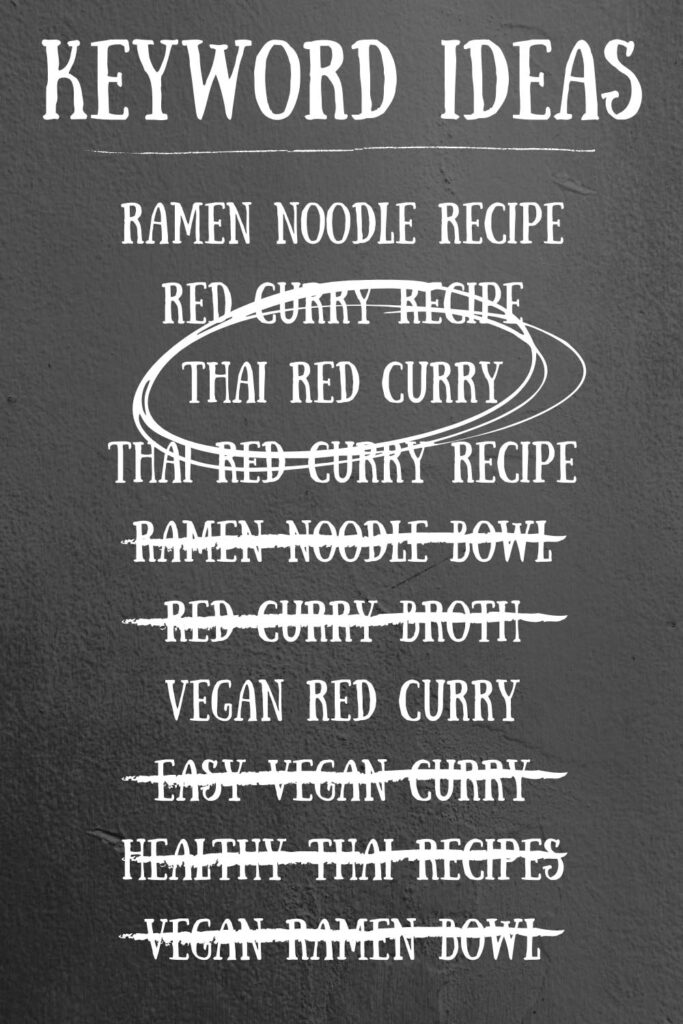
With that in mind, I might select Thai red curry as my primary keyword. It has one of the highest search volumes, low competition and it aptly and specifically identifies my recipe. As my primary keyword, I’ll use Thai red curry in my blog post title, my headings, subheadings, paragraphs and in the alt text of my images.
What To Do With the Rest of That SEO Keyword Research?
And as for those other high performing, low competition keywords? They’re not to be wasted either. Just because I don’t choose them as my primary keyword, doesn’t mean that I won’t use them at all. I will likewise use those word combinations throughout my blog post.
About Confessions of a Food Blogger

Kate Friedman is the creator of Herbivore’s Kitchen, a vegan food blog, and Confessions of a Food Blogger. Confessions of a Food Blogger is an informative resource for food bloggers (and, actually all bloggers) that provides helpful articles, online courses and tips and tricks for starting, building, marketing and managing a food blog.


